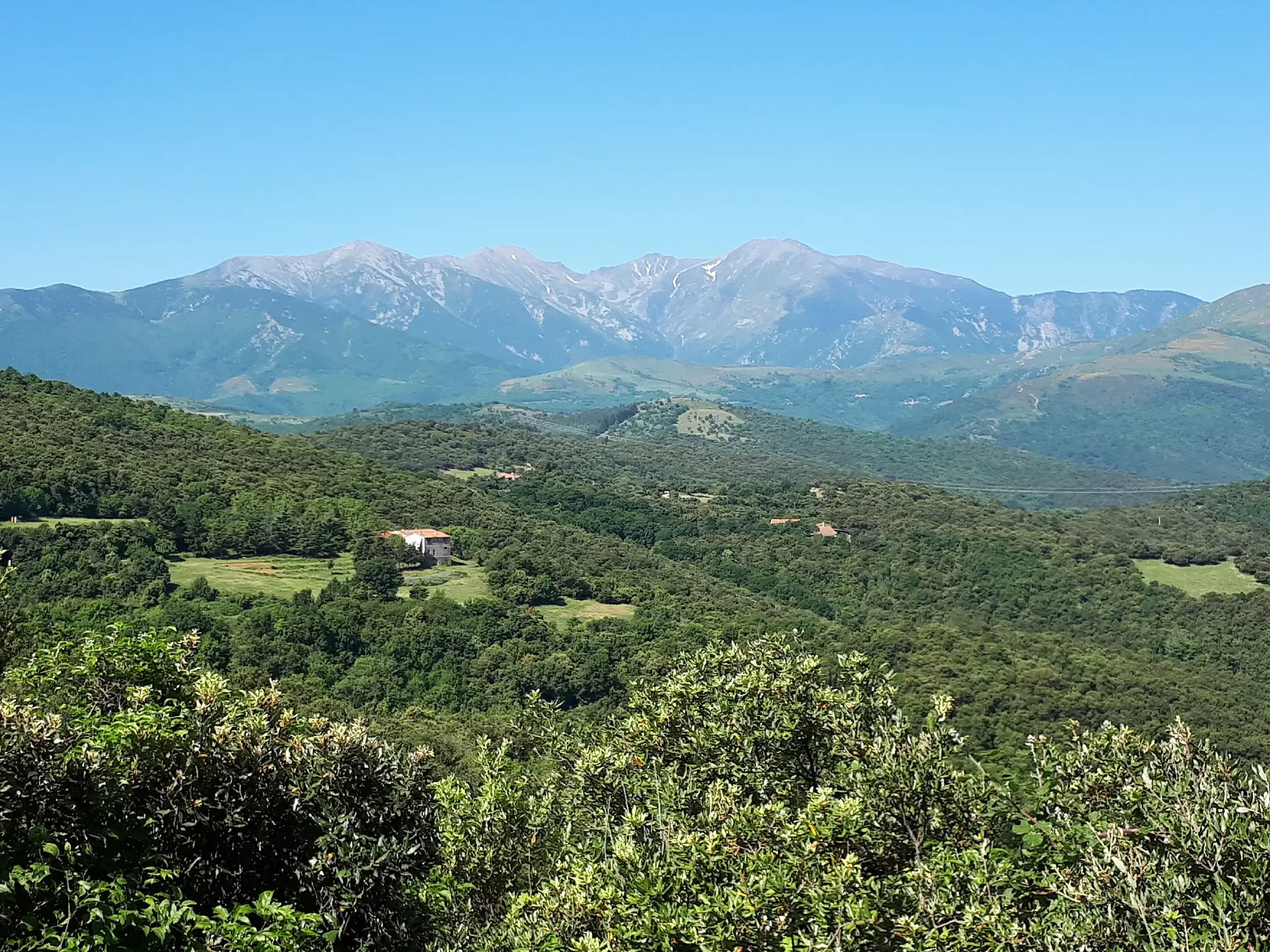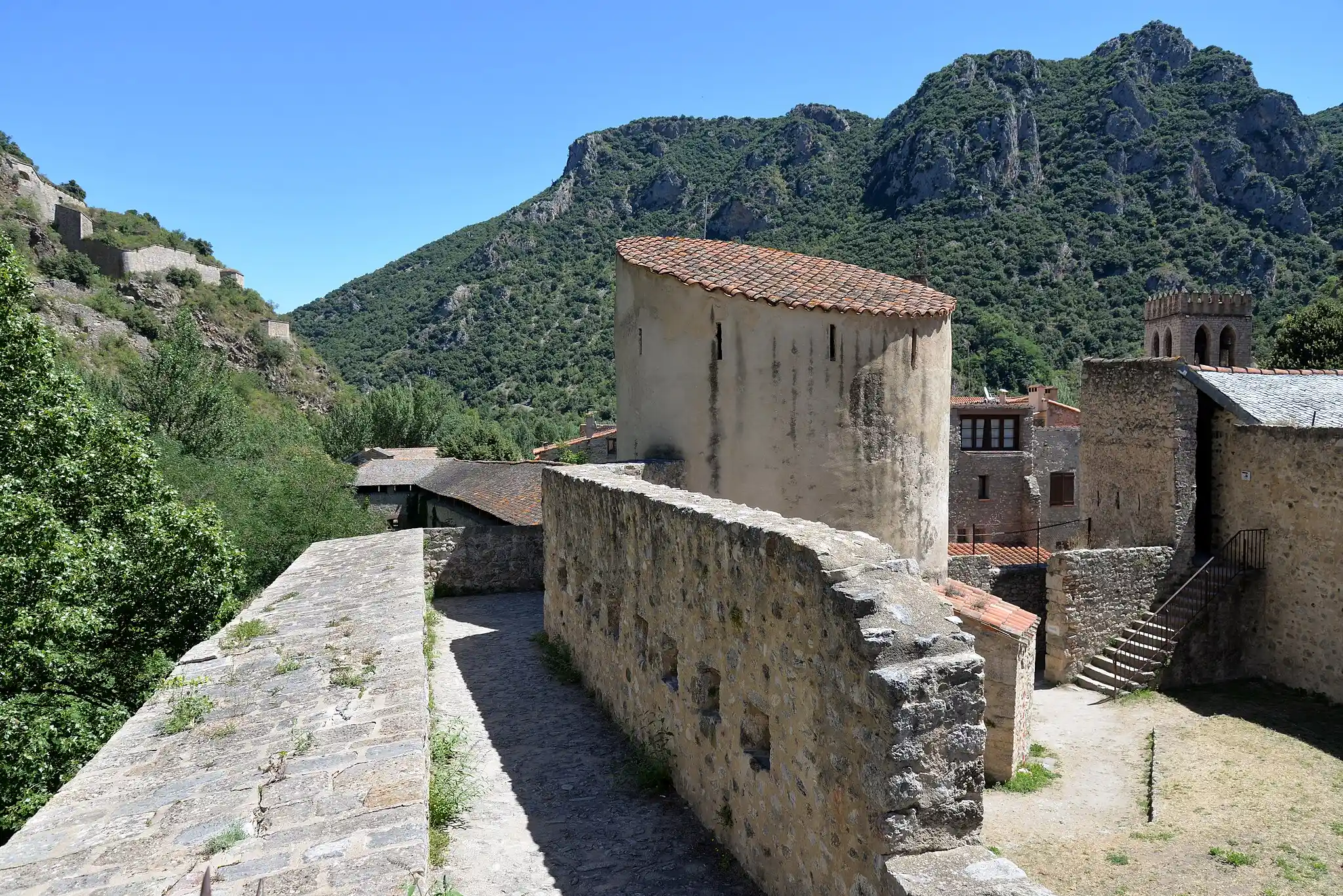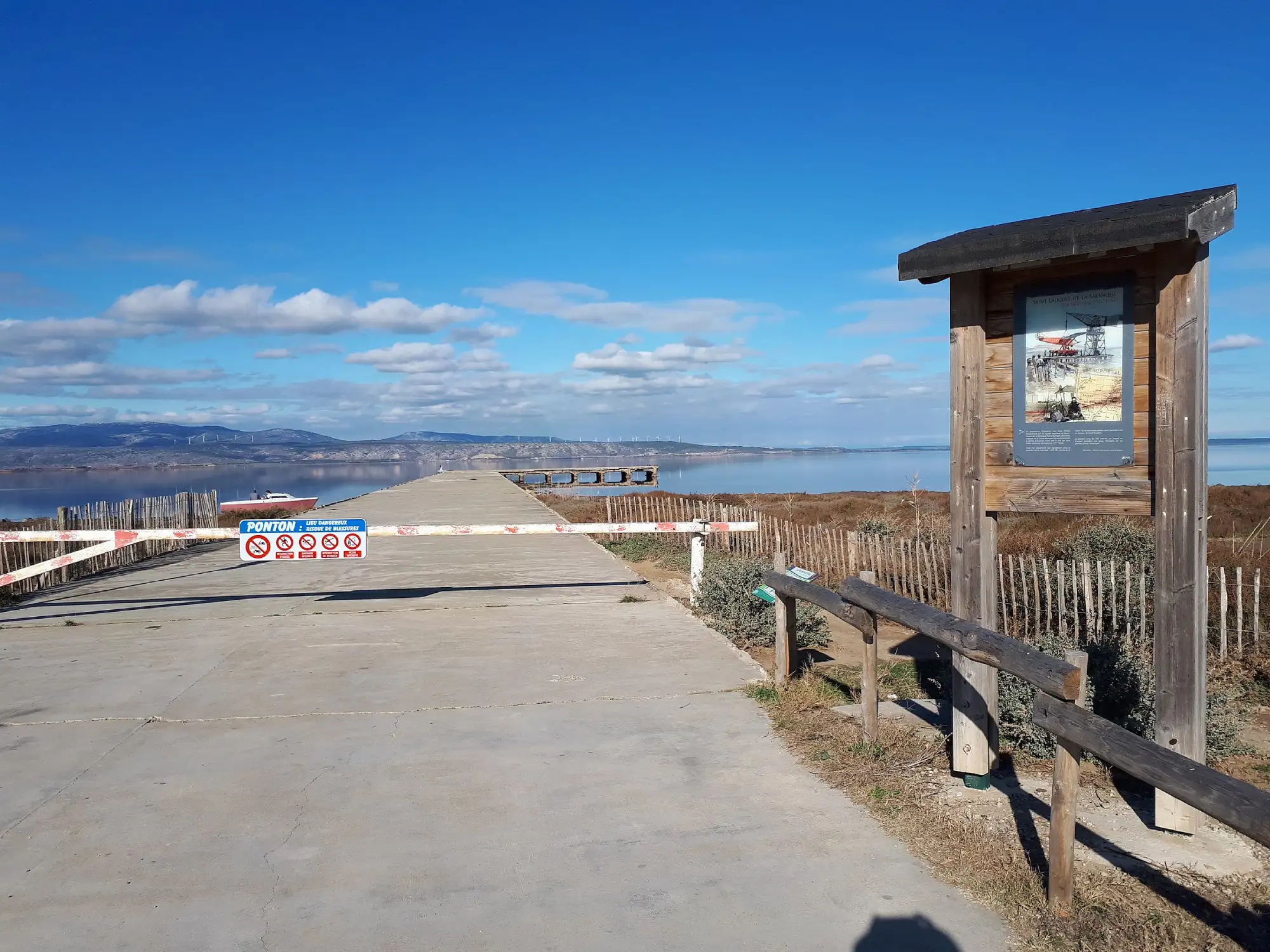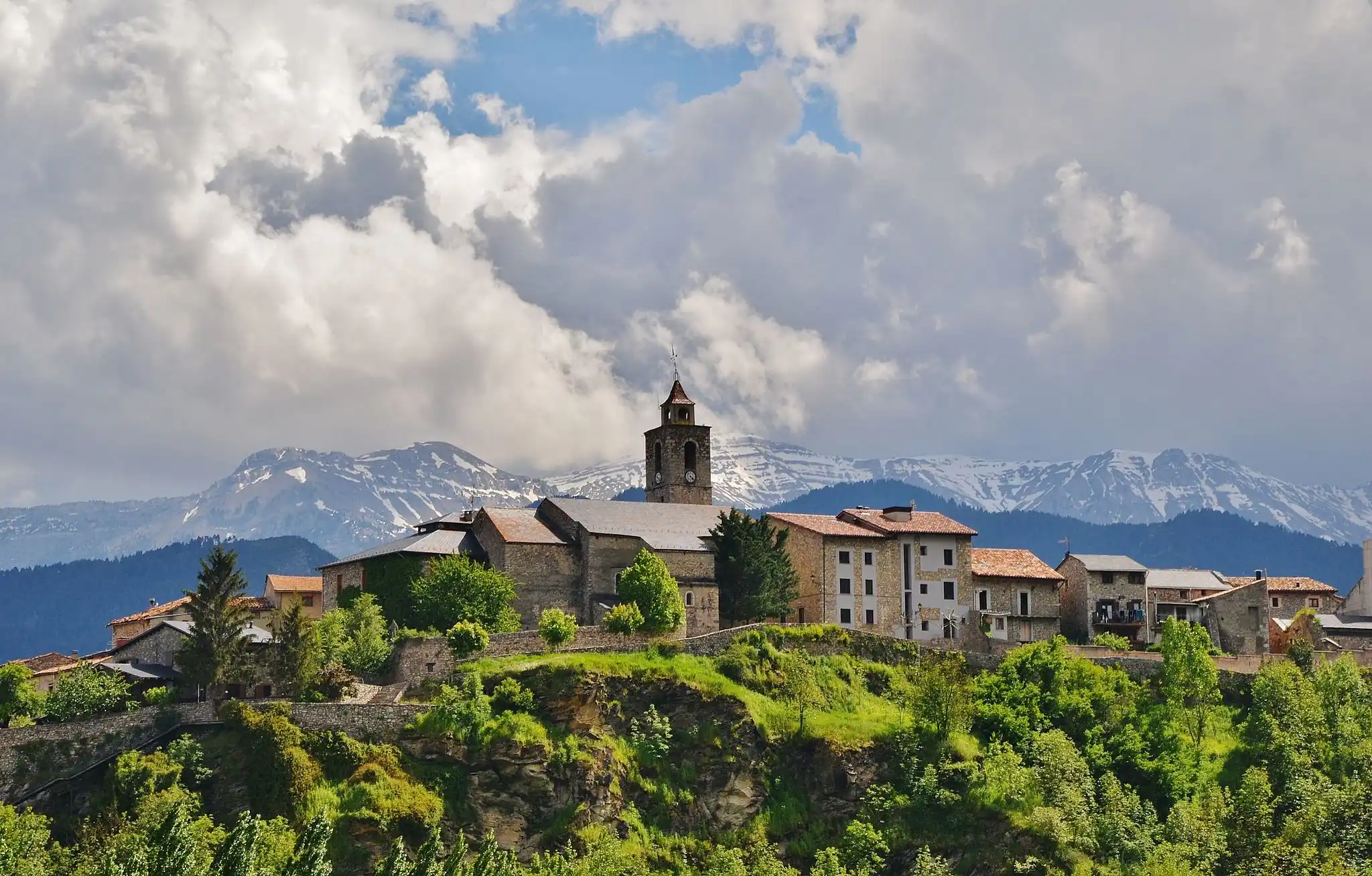Aspres and Conflent
Le Bois Fleuri, a campsite in Argelès-sur-Mer, invites you to stay in a richly contrasting natural environment. As well as swimming in the Mediterranean, discover the Aspres and Conflent regions, dominated by Mount Canigou, with their architectural treasures and unusual activities, such as the little yellow train that takes you from station to station through sublime landscapes.

Les Aspres
Les Aspres is a natural region in the Pyrénées-Orientales region around the town of Thuir. In the Middle Ages, the territory was merged with that of the Viscounty of Vallespir, also known as Les Aspres in reference to its aridity, as opposed to the fertile plains of Ribéral, a little further north. The term Aspres then came to designate precisely that part of the northern Catalan region between present-day Vallespir and Ribéral. The Aspres region lies to the west of the Roussillon plain and to the east of the Conflent. In Catalan, the name “aspre” refers to rocky, stony, high-altitude land, barren and unsuitable for cultivation. The Aspres region extends from 100 to 1,200 meters above sea level, with a more pronounced relief in its western part. Its rugged terrain is made up of scrubland and cork oak forests. Les Aspres only became part of the Kingdom of France in 1659, when the Treaty of the Pyrenees was signed, allowing France to annex Roussillon. The western part of the massif is home to picturesque, typical villages and remarkable medieval sites. Don’t miss these must-sees:
- Thuir, capital of the Aspres region, with its museum of arts and traditions and its legendary Byrrh cellars, the historic brand of French cinchona.
- Sainte-Marie de Serrabona priory in Boule-d’Amont, founded in the early 11ᵉ century.
- The medieval village of Castelnou, one of France’s most beautiful villages
- The Chapel of the Trinity, in the heart of the village of Prunet-et-Belpuig
The natural heritage of the Aspres is also extremely rich, with sublime sites such as the Boulès gorges and the Xatard pass, which leads to the foot of Mount Canigou, as well as exceptional views over the Tech valley.
The first foothills of the Canigou, considered the sacred mountain of the Catalan region, the Aspres were long home to iron mines, exploited until the early 20ᵉ century. This activity explains why the region is so densely populated, despite its poor soil and rugged terrain. Unlike the rest of Roussillon, where populations are generally grouped in densely populated clusters, the Aspres is home to a multitude of small villages. Demographics are thus highly segmented. Rural and unspoilt, the Aspres region is particularly well-suited to green tourism.
Le Conflent
On the former territories of the viguerie de Conflent and the comté de Conflent, this natural region of the Pyrénées-Orientales is situated between the Aspres and the Haute Cerdagne. The capital of the Conflent region is the town of Prades, home to architectural treasures such as the Baroque church of Saint-Pierre and the renowned Pablo Casals music festival. Its weekly market is one of the most popular in Roussillon. The unspoilt Conflent region is home to many other wonders, including Romanesque masterpieces such as the prieuré de Marcevol and the abbey of Saint-Michel de Cuxa. Evol and Eus, two towns classified as France’s most beautiful villages, are also worth a visit in Conflent. A stronghold dating back to the 11ᵉ century, Villefranche-de-Conflent was designed by Vauban. Protected on the heights by Fort Libéria, the town’s fortifications are a UNESCO World Heritage Site. At the foot of the Canigou mountains, discover the spa town of Vernet-les-Bains and its Belle-Époque heritage: an opportunity to enjoy wellness treatments in the sublime natural setting of a site where the fortified medieval architecture of the old village and the elegant buildings of the spa district stand side by side. A destination that combines relaxation, tradition and nature activities.
The Conflent region is home to some great natural sites not to be missed during a stay in Argelès-sur-Mer: the majestic and enchanting Orgues d’Ille-sur-Têt and the Grandes Canalettes caves are among the most not-to-be-missed. Conflent is also the gateway to the sacred Canigou mountain and its 2785-meter peak. A paradise for hikers, fishermen and thrill-seekers such as canyoning, climbing and paragliding, Conflent offers an infinite variety of outdoor activities.
To discover the Conflent countryside in an unusual and unforgettable way, climb aboard the emblematic little yellow train! Departing from Villefranche-Vernet-les-Bains station, it links up with Font-Romeu and Latour-de-Carol, taking you from the last apricot orchards to the ski resorts of the Pyrenees. This old metric line is known as the Cerdagne railway: put into service between 1904 and 1927, it is a UNESCO World Heritage Site.



